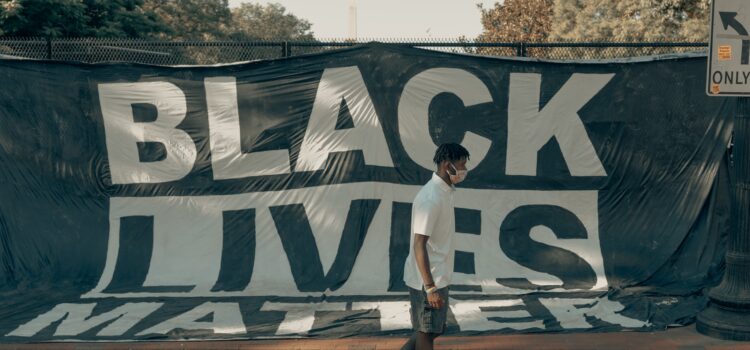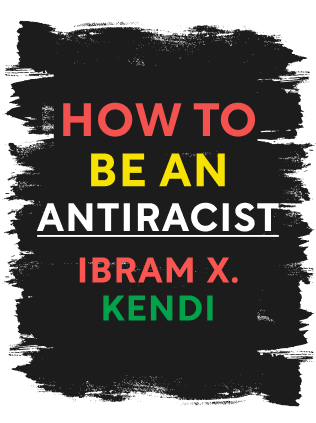

This article is an excerpt from the Shortform book guide to "How to Be an Antiracist" by tIbram X. Kendi. Shortform has the world's best summaries and analyses of books you should be reading.
Like this article? Sign up for a free trial here .
What is antiracism? How is knowing the answer important to combating racism?
Ibram X. Kendi’s book How to Be an Antiracist shows how the opposite of a racist is an antiracist. So, what is antiracism and how it different from being not racist?
Keep reading to find out the answer to the question “what is antiracism?”
What Is Antiracism?
Ibram defines antiracism as a collection of antiracist policies and ideas that cause racial equity.
So, what is antiracism in practice? An example of an antiracist idea is the belief that no race’s culture or subculture is better than any other’s.
Examples of antiracist policies are the Immigration and Nationality Act (1965), the Refugee Act (1980), and the Immigration Act (1900), all of which encouraged immigration to the US from non-European countries. Although, in various ways, these acts favored non-Europeans over European immigrants, the acts were antiracist rather than racist because they promoted equity among immigrant groups. In other words, they aimed to rectify the current and historical imbalance that favored White immigrants.
Steps to Ending Racial Inequity
There are several steps the Antiracist Research and Policy Center take to end racial inequity that you can take too:
- Acknowledge that the problem is caused by policy, not people.
- Acknowledge that racial inequity is intersectional.
- Find out which specific policies are causing inequity.
- Come up with new antiracist policies to replace them.
- Determine which individuals or groups have the power to put antiracist policies into place
- Educate the public about specific racist policies and antiracist replacements
- Connect with antiracist policymakers to get the new antiracist policies implemented
- Get rid of racist policymakers by asking antiracist policymakers to force them out of office
- Make sure the new antiracist policy is having an equalizing effect.
- If the new policies aren’t working, look for new policies, not new people.
- Keep an eye on policymakers to make sure no new racists policies come into effect.
What Is Antiracism From Ibram X. Kendi’s Perspective?
Shortly after graduating from the doctoral program at Temple University, Ibram went to a lecture in 2010 in which Boyce Watkins, a finance scholar, talked about how racism was a disease. Ibram had based most of his ideas on racism on Toure and Hamilton’s work and thought racism was more like an organ—it was an integral part of society and incurable.
Ibram didn’t want to change his idea of racism, and this isn’t uncommon. It’s hard for people to change beliefs that they hold strongly. An antiracist can have as much difficulty redefining racism as a racist can.
As Ibram studied racism further and the Black Lives Matter movement launched, Ibram began to reassess his ideas about racism. These were his steps to working toward being antiracist:
- He stopped denying that he could be racist at times.
- He revised the definition of racist to the definitions given in this book.
- He listed the racist ideas and policies he subscribed to.
- He acknowledged that he held racist ideas and supported racist policies because he grew up in a racist country.
- He understood the definition of antiracists as described in the book.
- He worked towards gaining power and changing policy.
- For example, Ibram took a position that had the power to make policy and donated money to organizations focused on policy changes.
- He acknowledged intersectionality.
- He thought antiracist ideas.
Ibram had become a college professor and writer because he believed in educational suasion, but the more he learned about racism as he researched his books, the more he realized ignorance wasn’t the cause of racism—the cause was self-interest. Hate and ignorance were byproducts that individuals picked up later. He realized that to truly be antiracist, he needed to start focusing on policy, and he founded the Antiracist Research and Policy Center in 2017.
The same night that Ibram spoke about the Antiracism Center’s vision, an unknown White male hung paper Confederate flags and cotton balls in some of the university’s buildings. Ibram didn’t let this scare him and kept working at his organization.
Cancer
As Ibram worked with the Antiracism Center, he started having health problems. He lost weight, had digestive problems, and threw up. He went to see a doctor, who sent him for a precautionary colonoscopy. No one expected it to turn anything up—Ibram wasn’t in any of the risk groups for colon cancer. However, the colonoscopy determined he had stage-4 metastatic colon cancer, which kills about 88% of people within five years of diagnosis.
Ibram’s wife and mother had both survived breast cancer and during their battles, he’d noticed some parallels between cancer and racism. Cancer spreads throughout the whole body and affects all systems, like racism spreads across the country and intersects with bigotry. People deny both cancer and racism, and both can kill whole systems.
Ibram wanted to survive to spend more time with his family, be a better person, and write more, among other things. There are plenty of good reasons for society to want to survive racism too.
Ibram underwent six months of chemotherapy, which shrunk his tumors enough that he could be operated on, and during the operation, the surgeons found that the chemotherapy had fully erased the cancer.
Ibram believes that society can get through racism too, especially if we treat it like cancer instead of something that’s incurable. If racial inequity is a cancerous tumor, start by attacking it with the “chemotherapy” of antiracist policies. Then, surgically remove any lingering racist policies. Encourage a healthy diet of antiracist ideas. Then keep an eye on the system so that if any danger returns, it can be dealt with early, before it can spread again.
What is antiracism in this metaphor? It is the combined, aggressive treatment that has to be persistent to combat the cancer that is racism.

———End of Preview———
Like what you just read? Read the rest of the world's best book summary and analysis of Ibram X. Kendi's "How to Be an Antiracist" at Shortform .
Here's what you'll find in our full How to Be an Antiracist summary :
- What racism is and how it evolved
- How you might have subtle racist thoughts and not even be aware of them
- Why being "not racist" isn't good enough






